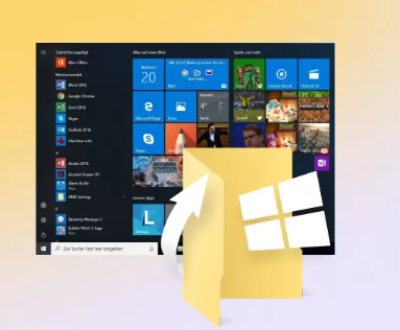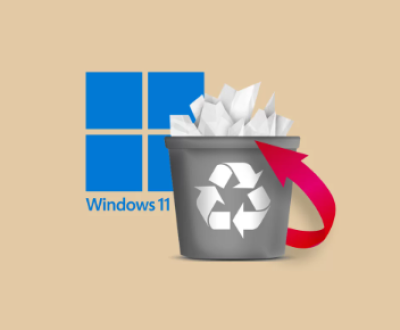They are small, portable, and reliable storage devices used by millions of individuals and businesses to store and transfer data. Their convenience and versatility make them an ideal choice for various applications, including file backups, software installations, and the easy transport of multimedia files. However, despite their usefulness, these devices are not immune to issues, one of the most common being “write protection.” Write protection on a USB flash drive prevents the user from modifying, deleting, or even formatting the data stored on the device.
Write protection, while beneficial in specific circumstances, can become a significant frustration when it occurs unexpectedly. Imagine trying to delete or move a file, only to be greeted with an error message that reads, “The disk is write-protected. Remove the write protection or use another disk.” This issue can disrupt work, halt data transfers, and create anxiety about potentially losing important files. Moreover, a write-protected USB flash drive that cannot be formatted can be especially frustrating, as it effectively renders the device unusable for future tasks.

Write Protection on USB Flash Drives
Write protection is a feature designed to prevent any modification to the data stored on a storage device, such as a USB flash drive. It acts as a safeguard to ensure that important files remain unaltered, preventing unauthorized writing, deleting, or formatting of the data. Some USB flash drives come with a physical switch that allows users to toggle write protection on and off. When the switch is activated, the drive becomes “locked,” and no changes can be made to the data stored within.
In theory, this is a helpful feature, particularly when protecting critical files from accidental deletion or malware attacks. However, problems arise when the write protection is activated unintentionally or when a USB drive without a physical switch becomes mysteriously write-protected. In these cases, users often struggle to regain full access to their files or format the drive for reuse.
There are several factors that can lead to a USB flash drive becoming write-protected, including:
Physical Write Protection Switch: Some flash drives come equipped with a small switch that can enable or disable write protection. If this switch is accidentally flipped, the drive will be locked from any modifications.
File System Corruption: A corrupted file system can sometimes cause a drive to become write-protected. This may occur if the drive was improperly removed from a computer or if there was an interruption during a file transfer process.
Virus or Malware: Malicious software can sometimes alter the properties of a USB drive, setting it to a write-protected state to prevent users from modifying or deleting the infected files.
Driver Issues: Outdated or corrupted USB drivers can lead to operational issues with the drive, including write protection errors.
Registry Changes (Windows): In some instances, system registry settings related to storage devices may be altered, causing write protection to be enforced on the drive.
Bad Sectors: A USB drive may develop bad sectors over time, leading to malfunctions like write protection, as the system attempts to protect itself from further damage.
Third-Party Software: Certain encryption or backup software can inadvertently lock a USB drive in write protection mode to safeguard the data.
Impact of Write Protection: A Block on Productivity
When a USB flash drive becomes write-protected, it limits the user’s ability to perform essential tasks. These limitations can be particularly disruptive in professional environments where the free flow of data is crucial to operations. For instance, if a company is relying on USB drives for transferring large data sets between computers, an unanticipated write protection error could delay important projects and result in lost productivity.
In personal scenarios, a write-protected USB drive can prevent users from adding or removing files, such as music, documents, or photos. The inability to format the drive adds another layer of frustration. Formatting is often a last resort in troubleshooting storage devices, as it erases all data and restores the drive to its default settings. When formatting is not an option, users may feel that their USB drive is permanently unusable.
Furthermore, write protection can pose a significant challenge when users need to securely wipe a flash drive before disposing of it or passing it on to another individual. Without the ability to format the drive, sensitive information remains on the device, raising concerns about data privacy and security.
Solutions to Remove Write Protection
Although write protection on USB flash drives can be an aggravating issue, there are several methods to troubleshoot and resolve the problem. These solutions range from basic checks, such as examining the physical write protection switch, to more advanced procedures like editing the system registry. Below, we outline some of the most effective techniques for removing write protection:
Check for Physical Write Protection Switch: If the USB drive has a physical switch, ensure it is in the “unlocked” position. This is often the simplest solution to write protection issues.
Scan for Viruses and Malware: Use antivirus software to scan the USB drive for any malware or viruses that might be causing the write protection. If malicious software is detected, remove it and see if the issue is resolved.
Use Diskpart Command (Windows): For more advanced users, the Diskpart command in Windows can be used to clear write protection from the USB drive. To do this, open Command Prompt as an administrator, type “diskpart,” and follow the necessary steps to remove write protection from the device.
Edit the Windows Registry: Another advanced solution involves editing the registry on a Windows computer. By adjusting the registry key associated with write protection, users may be able to restore full access to their USB drive.
Format the Drive via Disk Management (Windows): If the drive is no longer needed and the data can be sacrificed, using the Disk Management tool in Windows to format the drive is another option. In some cases, formatting the drive can bypass the write protection and restore the device to working condition.
Use Third-Party Software: Several third-party tools are designed specifically to remove write protection from USB drives. These tools can automatically diagnose and fix issues related to write protection and formatting.
Replace the USB Drive: If all else fails, the issue may be a sign of a hardware failure. In these cases, replacing the USB flash drive may be the only viable solution.
Preventing Future Write Protection Issues
While fixing a write-protected USB drive can be a time-consuming process, taking steps to prevent future occurrences is equally important. Users can avoid the issue by following these best practices:
Safely Eject USB Drives: Always safely eject USB flash drives from a computer before physically removing them. This prevents file system corruption that can lead to write protection errors.
Regular Virus Scans: Regularly scanning USB drives for viruses and malware can help prevent malicious software from causing write protection problems.
Keep Drivers Updated: Ensure that all USB drivers are up to date, as outdated or corrupted drivers can sometimes trigger write protection issues.
Back Up Data: Keeping regular backups of the data on USB flash drives is always a good practice. This ensures that if a drive becomes write-protected or otherwise fails, the data will not be lost.
Use Reliable USB Drives: Investing in high-quality USB drives from reputable manufacturers can reduce the likelihood of encountering issues like write protection.
Write protection on USB flash drives is a safeguard that can protect files from unauthorized access or accidental deletion. However, when this feature becomes unexpectedly activated, it can lead to frustration and disruption. Understanding the root causes of write protection, as well as how to resolve it, is crucial for maintaining the usability of USB drives. With the right tools and techniques, users can often restore their drives to full functionality, allowing them to continue using these versatile storage devices in their everyday lives.
About us and this blog
Panda Assistant is built on the latest data recovery algorithms, ensuring that no file is too damaged, too lost, or too corrupted to be recovered.
Request a free quote
We believe that data recovery shouldn’t be a daunting task. That’s why we’ve designed Panda Assistant to be as easy to use as it is powerful. With a few clicks, you can initiate a scan, preview recoverable files, and restore your data all within a matter of minutes.

 Try lt Free
Try lt Free Recovery success rate of up to
Recovery success rate of up to









